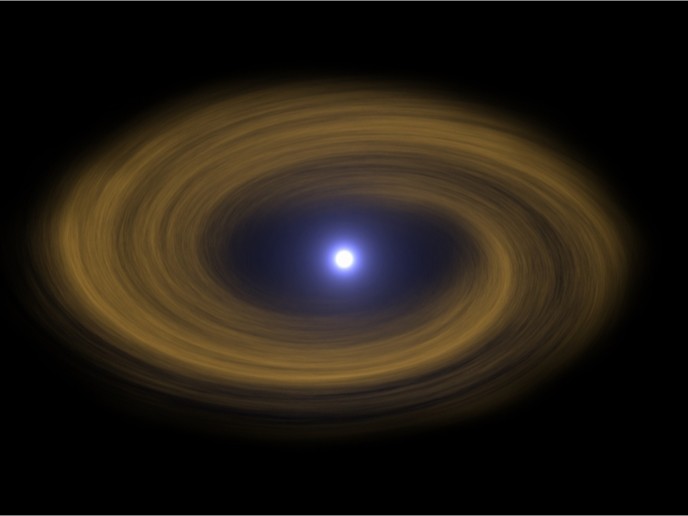Chemical fingerprints of stars give clues to exoplanet make-up
Stars are born in a maelstrom when massive, cold clouds of gas and dust collapse and ignite a star. Leftover material in a disk gives rise to boulders ranging up to metres in size. Eventually, large clusters of such boulders will be incorporated into planets that orbit the star. At the same time, a bewildering network of chemical reactions gives rise to complex organic molecules that are trapped in the icy boulders around the star, and are eventually transported to the planets. “Deciphering the chemical ingredients of material that give birth to planets will reveal the bigger picture of the origin and diversity of planets. Currently, a wealth of research is dedicated to measuring the atmospheric composition of exoplanets as well as planets of our solar system. Although this makes sense, those planetary characteristics are just a springboard for discussions around the habitability of exoplanets, which is ultimately determined by their birth material,” notes Mihkel Kama, coordinator of the EU-funded project DISCO.
Using stellar ‘contaminated material’ as a probe for planets
Hitherto research has given a preliminary understanding of oxygen and carbon abundance in protoplanetary disks. The primary goals of DISCO were to add several more elements to the toolbox of chemical composition analysis to improve understanding of how planets, and specifically habitable environments, originate. Researchers pioneered a new approach called the ‘Contaminated A-stars Method’ (CAM) which applies to stars slightly bigger than our Sun. “The chemical element budget of planet-forming material close to a star is very hard to measure directly, so we were looking for innovative new methods to do this. While solar-type stars have churning convection zones, more massive stars are more quiescent. As a result, any material falling onto such a star, like blobs of planet-forming material or gas ejected from a hot close-in planet, would not mix into the star’s interior but would rather sit on its surface. This makes it easy for astronomers to measure their spectra and analyse the chemical imprint of the accreted material on their surface,” explains Kama.
New chemical elements detected for the first time
Researchers studied several planet-forming disks surrounding young stars. Previously, the focus had been on carbon and oxygen, which was of limited use for understanding the composition of planets. Their research has led to impressive results. In particular, they succeeded in teasing out the precise fraction of sulfur atoms that were locked in solid particles prior to planet formation. This information, which is hard to obtain with any other means and can now be obtained for almost any element using CAM, provides a crucial input to planet-formation models used to predict the elemental composition of planetary solid cores and gaseous atmospheres. The team has also tracked sodium, zinc, iron and magnesium particles locked in solid particles. “These are elements astronomers have been desperately trying to track down and characterise in planet-forming environments. We hope that this work is going to bring a breakthrough in understanding the properties of Earth and planets around other stars,” concludes Kama.
Keywords
DISCO, composition, exoplanet, protoplanetary disk, contamination by accretion method (CAM), sulfur







